
Fact Sheets And Publications
Leveling Up Poultry Biosecurity:
Footwear
By Georgie Cartanza, Extension Agent Statewide - Poultry; and Sydney Riggi, Extension Agent - Nutrient Management
Dedicated footwear or disposable boots for each poultry house is best for biosecurity. Disposable boots can be purchased online or at local farm supply stores.
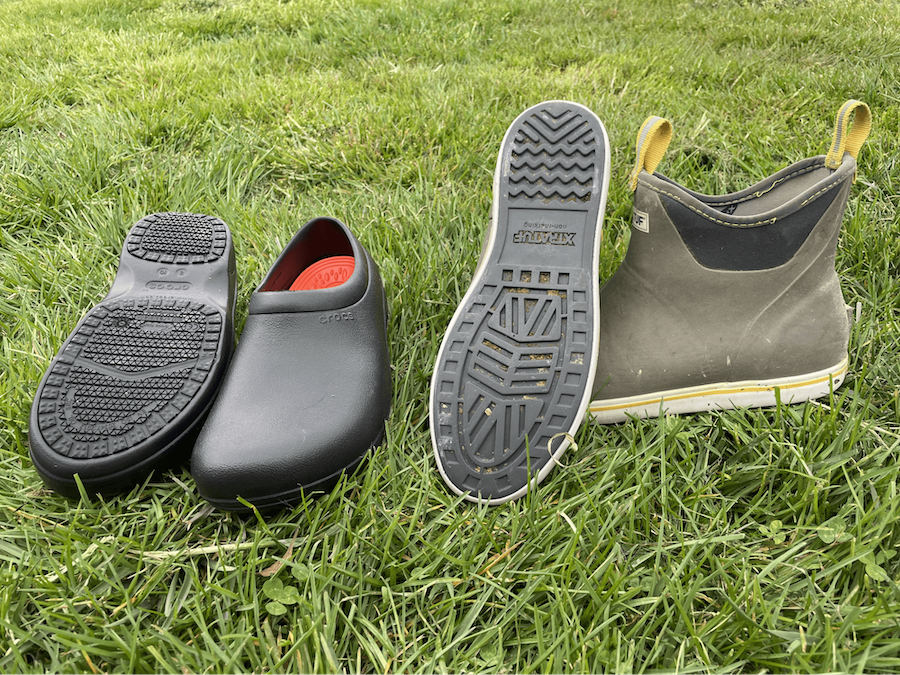
Example of dedicated footwear
Minimal tread for easy cleaning
Non-rubber material can be difficult to clean and disinfect
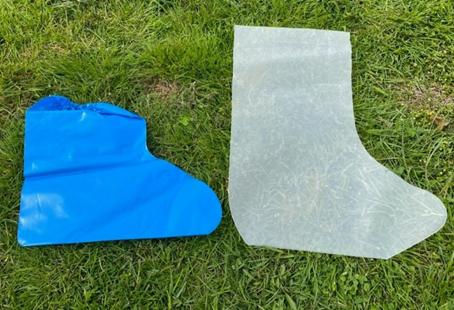
Disposable boots fit over shoes
Single use in one house
6 mil plastic is preferred
Footbaths are for disinfection not for cleaning (The Poultry Site, 2016). Footwear should be completely free and clean of any organic material. Organic debris cannot be disinfected.
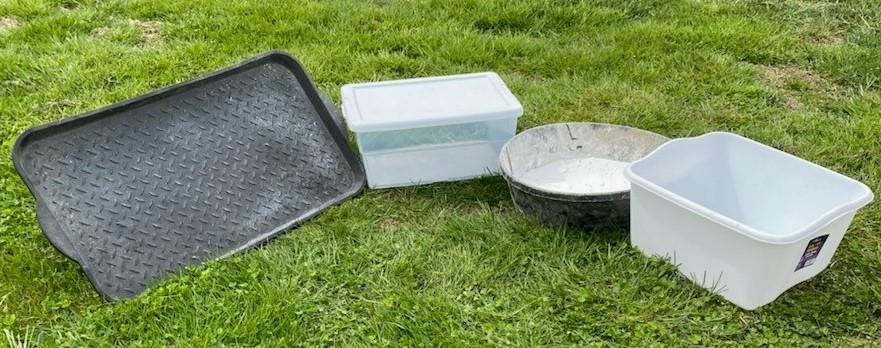
- A shallow container is preferred
Change disinfectant frequently
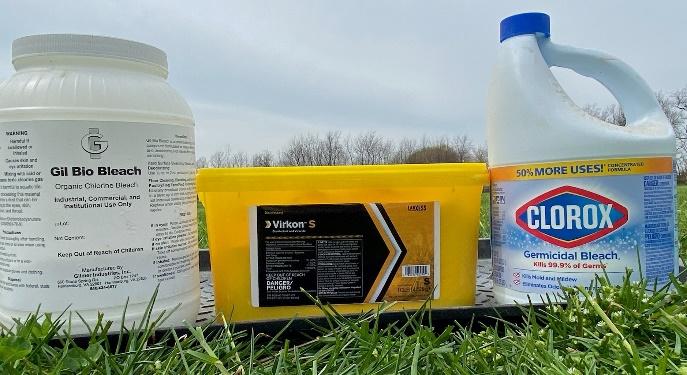
- A listing of recommended disinfectants can be found on the USDA -APHIS website*
Consult with your integrator about approved products
Follow label instructions
Removal of organic material can require much effort and can be time-consuming.
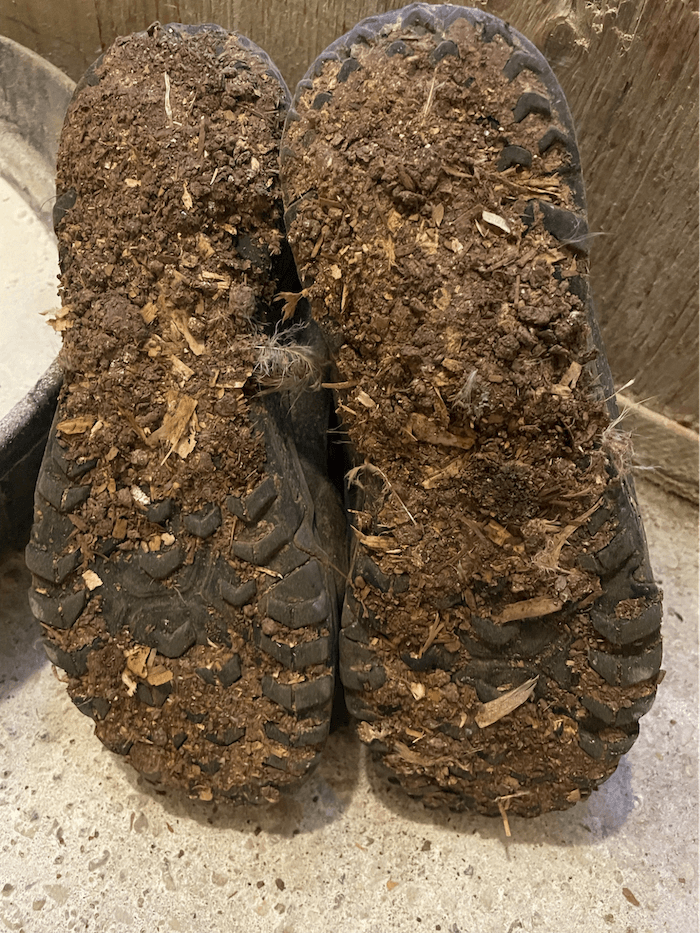
Dirty soles prior to cleaning
Notice the amount of organic material that has accumulated
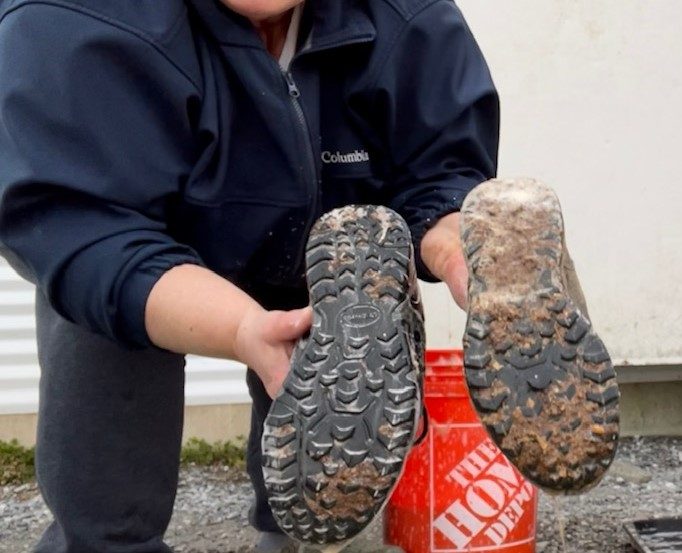
The sole on the left after scrubbing vigorously with a boot brush for 6.5 minutes is still not clean
The sole on the right after soaking in a foot bath for 6.5 minutes is not clean
The example above shows why dedicated footwear or disposable boots is best.
Other considerations
Footwear is one element of practicing good biosecurity. Poultry growers should also consider the following when thinking about biosecurity:
Hand washing
Changing clothes
Disinfection any items that go in the poultry house like cellphones and tools
Posting biosecurity signs
Limiting visitors
Setting up a disinfecting station for essential visitors
Proper disposal of mortality
Rodents, wild and domestic animals should not have access to the poultry house
*None of the products represented here are endorsements of a brand. They are only examples.
Resources
McCrea, B.A., and Bradley, F.A. 2008 Footbaths for Animal Facilities: Easier than you think. University of California-Division of Agriculture and National Resources. Publication 8281.
United States Department of Agriculture Animal and Plant Health Inspection Service 2022. Disinfectants. Available at: https://www.aphis.usda.gov/aphis/ourfocus/animalhealth/emergency-management/ct_disinfectants. Verified 24 March 2022.
Reference
The Poultry Site 2016.Myths About Poultry House Disinfection. Available at: https://www.thepoultrysite.com/articles/myths-about-poultry-house-disinfection-busted. Verified 24 March 2022
UD Cooperative Extension
This institution is an equal opportunity provider.
In accordance with Federal law and U.S. Department of Agriculture policy, Cooperative Extension is prohibited from discriminating on the basis of race, color, national origin, sex, age, or disability.
